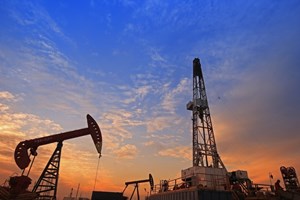CERAWeek 2023 by S&P Global: Hess and COP chiefs outline challenges facing operators
On Day Two of CERAWeek 2023 by S&P Global (CERAWeek), a session entitled, “Oil & Gas: Leading for the decade,” featured a discussion with Hess Corporation CEO John Hess and ConocoPhillips Chairman and CEO Ryan Lance, hosted by S&P Global Vice Chairman Dan Yergin. And both chiefs wasted no time diving into the challenges and opportunities that operators face now and in the future.
Security of supply. Given the push toward an energy transition, but acknowledging that the Russian invasion of Ukraine in 2022 had changed the landscape a bit, Hess said it’s obvious that oil and gas are going to be needed for some time to come. This is despite a recent comment by U.S. President Joe Biden that “oil and gas are going to be around for another 10 years.” Underscoring the seriousness of ensuring that the U.S. and other countries have enough oil and gas supplies to function, Hess said, “It’s a national security matter.” Stressing that there is concerted competition for global oil supplies, Hess added that “China imports 75% of its oil.”
So, while there is the effort in the U.S. and Europe to work toward an energy transition and clean energy, there obviously is a need to make sure that reliability of supply is maintained. Therefore, said Hess, “We have a dual challenge: we need 20% more energy by 2050, and we need to go to net zero simultaneously.” Lance added his concerns on the situation, stating, “I implore people to do the math. It’s going to take everything.”
Impact of Ukraine. Asked by Yergin what Russia’s invasion of Ukraine had done to the global oil market, the two chiefs had very direct answers. “It highlights what failed energy policy is about.” And Hess added, “Ukraine showed us that there is no cushion in the system. I don’t know if we’re any more prepared than before.”
Investment shortfall. Yergin also asked the two CEOs whether investment levels have been sufficient to fund enough upstream activity. “No, we’re not investing enough,” declared Lance. “We’re taking a very short-sighted view.” That being said, Lance mentioned that ConocoPhillips has several significant projects underway or about to be started, and they’re all of a longer-cycle nature. “We have a big project on the Gulf Coast, and we’re doing some things in Australia, and then we have the big project in Alaska.”
The latter project that Lance referred to is the Willow field development project, which has received all of its permits but whose start-up is now subject to a decision by President Biden and his White House advisors. “Senator (Dan) Sullivan (R-Alaska) talked at lot about this (at CERAWeek),” said Lance. “This big project is in the NPR (National Petroleum Reserve-Alaska). It has gone through four years of permitting. And we have come up with a three-pad scheme that was accepted (by federal officials). But this has now gone to the White House, and, unfortunately, this will be a political decision.”
Further development and new supplies. Prompted by Yergin to evaluate the future of new supplies in the Permian basin and elsewhere, Lance made a prediction. “It (the Permian) probably plateaus later in this decade. The Permian’s been a great gift to the world for the last 10 to 15 years. However, the supply chain has been tough.”
Hess noted that his firm had taken a different approach to growth. “We got into Guyana when others got into the Permian,” he explained. “We decided to go into Guyana and made our first discovery (with partner and operator ExxonMobil) in 2015, and there have been 30 discoveries since then. So far, 11 Bboe have been found, and we’re producing 400,000 bpd from two FPSOs. We expect to be producing 1.2 MMbopd from six FPSOs by 2027. Development has been twice as fast as we previously achieved: just three years from FID. I think the Gulf of Mexico still offers upside potential. The Gulf if producing 1.9 MMbopd, and we see that continuing, as long as lease sales continue. We’ll be doing tie-backs in the Gulf.”
Cleaner energy. Both CEOs said their companies continue to work toward cleaner energy and are doing similar things to reduce emissions. “The country has two major undertakings,” said Hess. “We’re making liquid fuels cleaner, and we have to make the power grid more stable.” He also noted that the cost of carbon avoidance can be between $300 and $500 per ton.
IRA impact. The chiefs also discussed the impact of the Inflation Reduction Act and what it means for the industry. “The IRA is going to incentivize other forms of energy,” said Lance. Yet, he added, “It is still procedurally impossible for us to go through the transition because of permitting issues.” Hess agreed that the IRA has its problems, as well as opportunities. “There’s a lot of fine print in the IRA,” noted Hess. “There will still be losers and winners.
At the end of the day, both CEOs agreed that activity, particularly for oil and gas, will be a matter of money. “Investor sentiment has got to switch,” said Lance. Hess was more positive. “I think investors are beginning to wake up. They know that oil and gas are going to be here for a while.”



